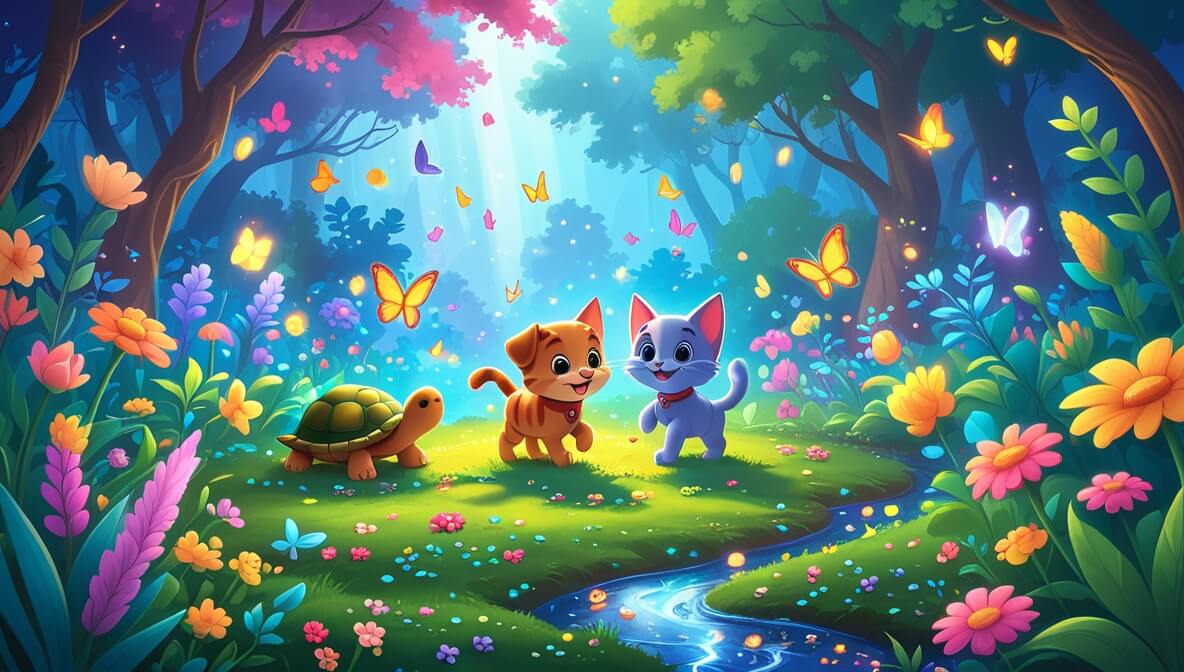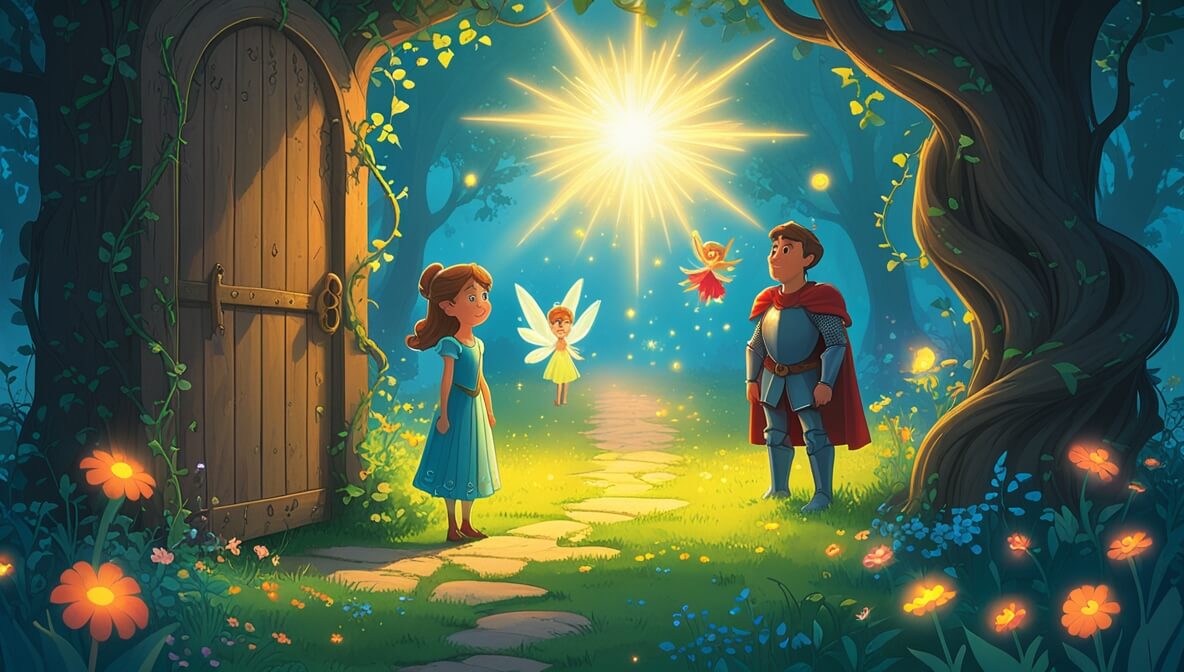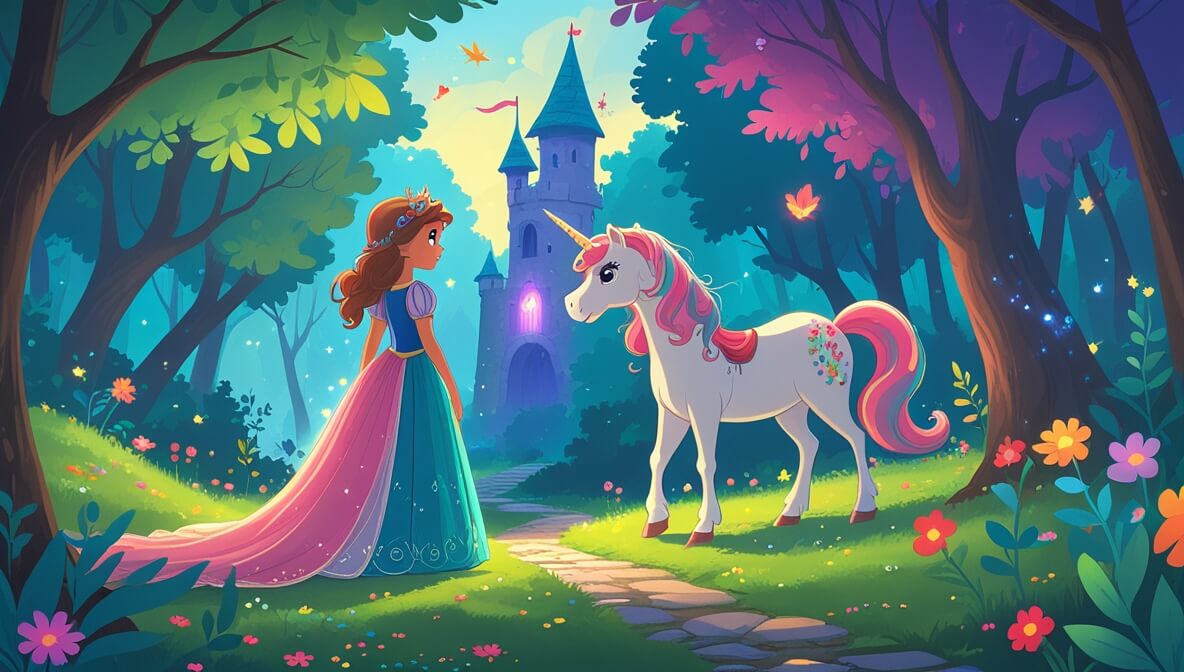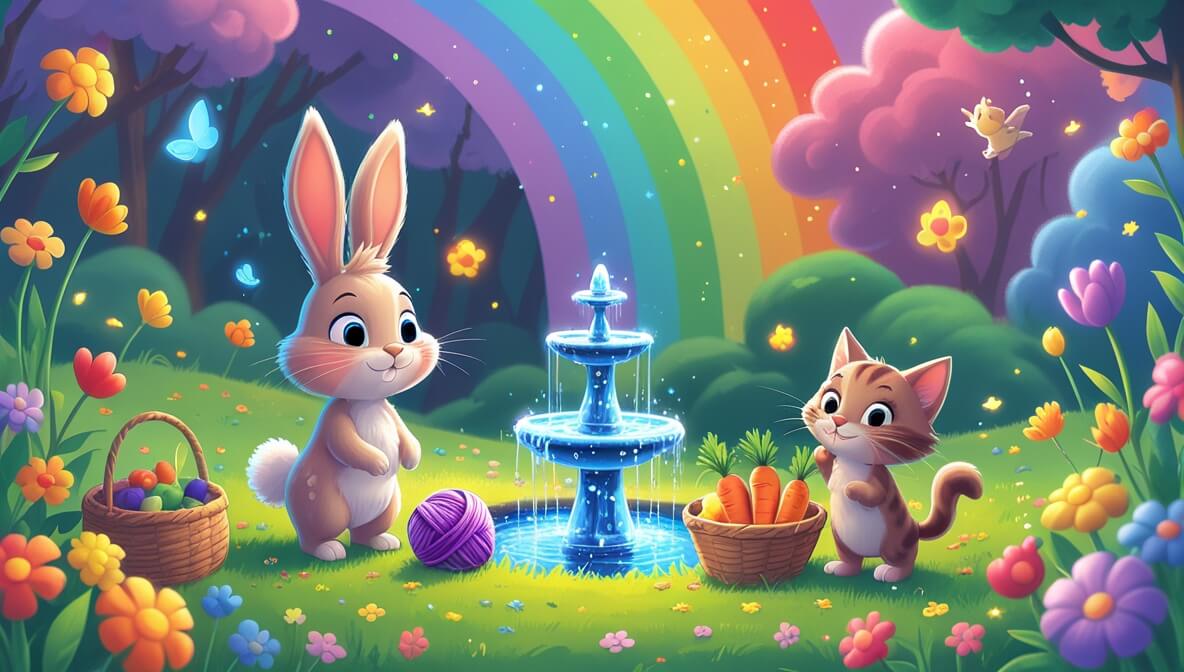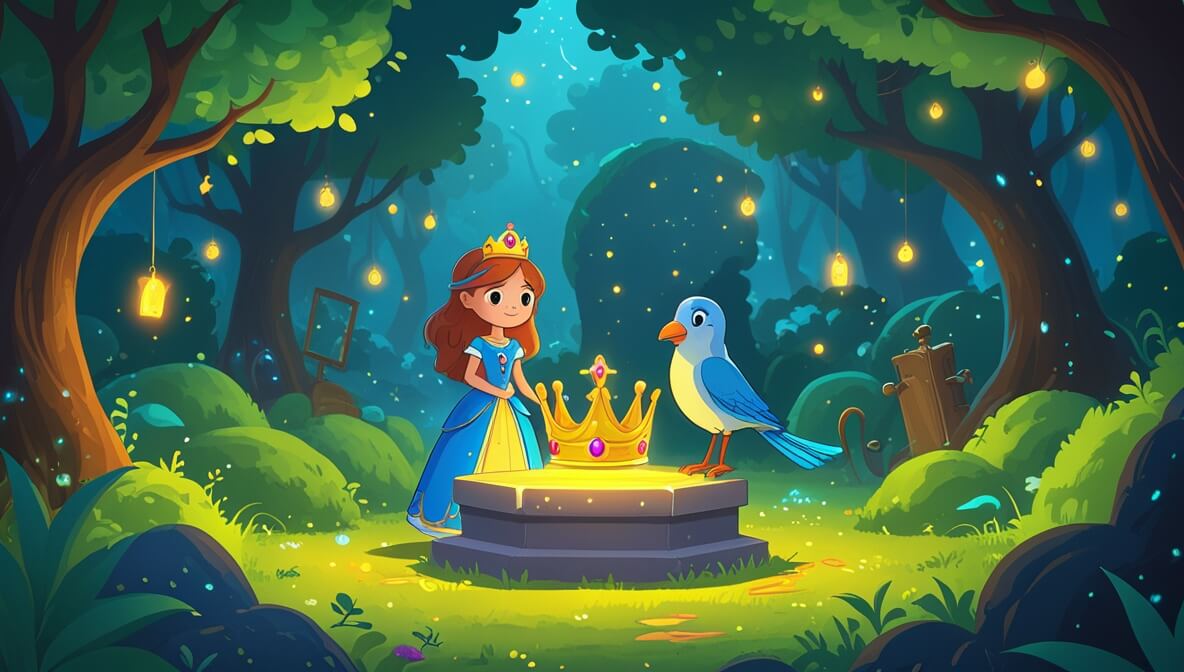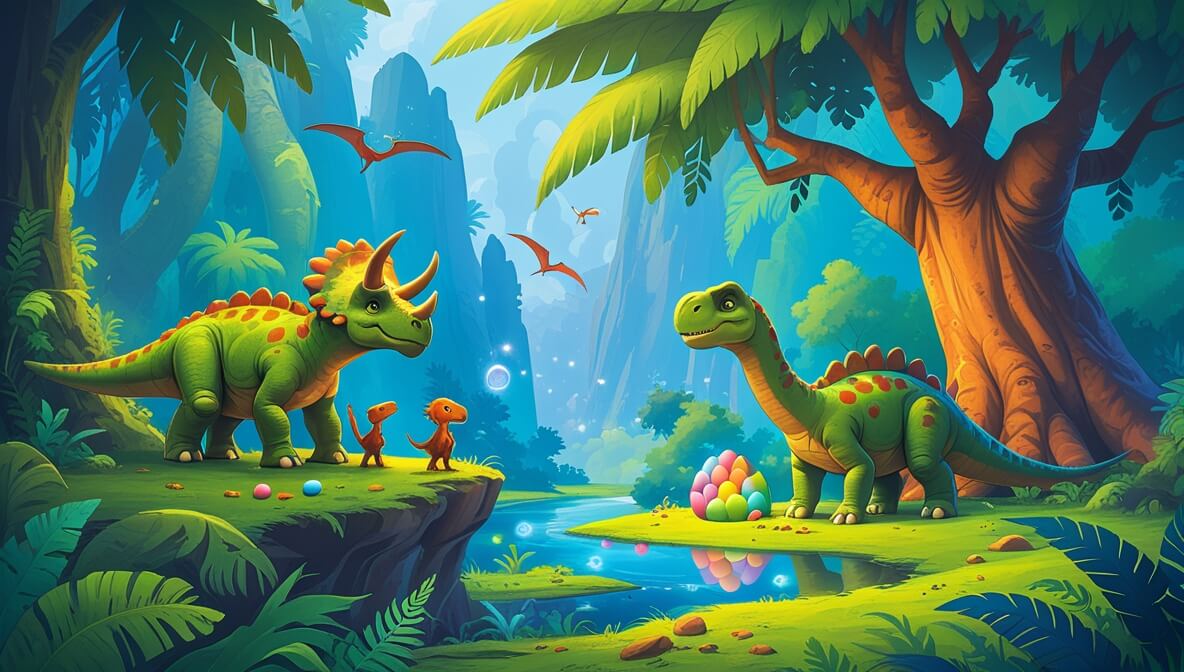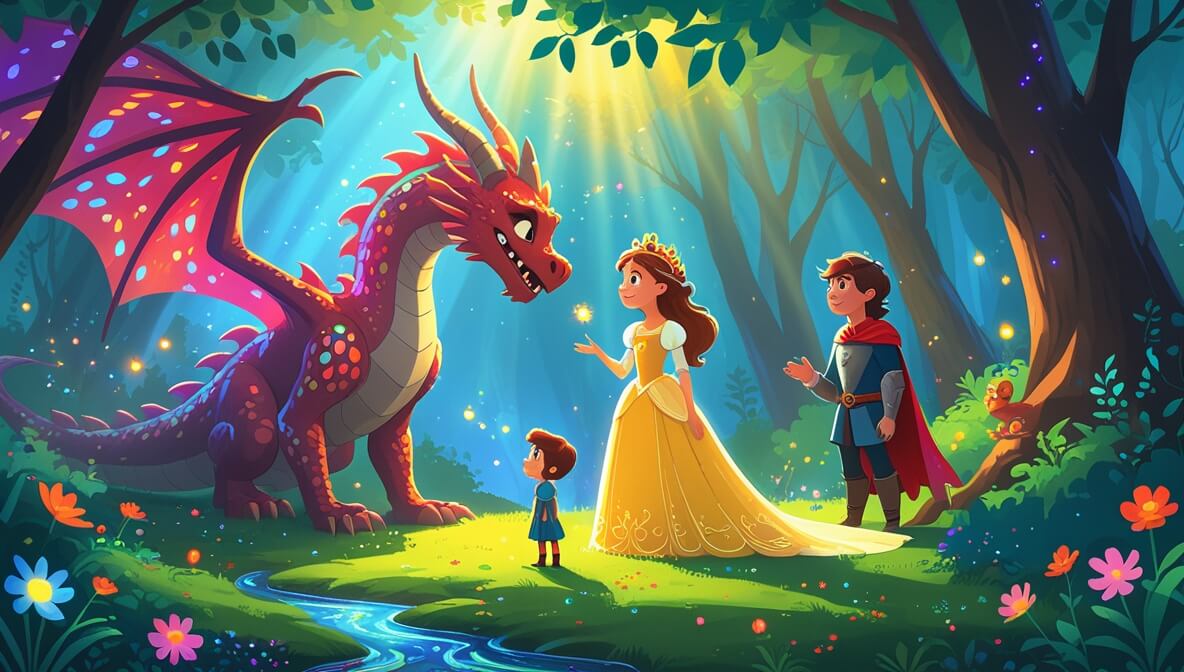A little puppy and a curious kitten discover a magical garden right behind their house. Together, they explore its wonders and make new friends.
Age Recommendation
0 – 4 years
Characters
Characters:
- Fluffy (a playful puppy)
- Whiskers (a curious kitten)
Story
Once upon a time, in a quiet little house, there lived a puppy named Fluffy and a kitten named Whiskers. They were the best of friends and loved to play together.
Discovering the Secret Garden
One sunny morning, while playing in the backyard, Fluffy noticed a small door hidden behind the bushes. “Look, Whiskers! What could it be?” he barked. Together, they pushed the door open and found a magical garden full of colorful flowers and singing birds.
Meeting New Friends
As they wandered through the garden, Fluffy and Whiskers met a friendly butterfly named Sunny and a wise old turtle named Shellie. “Welcome to our garden,” Sunny fluttered. “Would you like to join us on an adventure?” asked Shellie with a warm smile.
The Magical Adventure
Fluffy, Whiskers, Sunny, and Shellie explored the garden, discovering hidden paths and sparkling streams. They laughed, played, and shared stories until the sun began to set. “We should head back, but we will return soon,” said Whiskers, purring happily.
The end.
Moral of the Story
Friendship and exploration bring joy and wonderful discoveries. It’s fun to embrace curiosity and make new friends along the way.
Questions to Think About
- Why was the door to the magical garden hidden?
- How did Fluffy and Whiskers feel when they discovered the garden?
- What kind of adventures would you like to have in a magical garden?
- What did Fluffy and Whiskers learn from Sunny and Shellie?
- How can we make new friends like Fluffy and Whiskers did?
Do You Know
- Butterflies taste with their feet! They can sense the taste of a flower just by landing on it.
Word Explorer
- Adventure: A fun and exciting journey.
- Curious: Wanting to know or learn about something.
- Magical: Something that is very special and full of wonder.
Emotions in the Story
- Excitement: Fluffy and Whiskers felt excited when they discovered the magical garden.
- Joy: They felt joy as they played and made new friends in the garden.
- Curiosity: Their curiosity led them to explore the hidden paths and meet new friends.
Color Your Scene
Imagine Fluffy and Whiskers in the magical garden, surrounded by colorful flowers and fluttering butterflies. Draw this scene using bright colors like pink, yellow, and blue for the flowers, and orange and purple for the butterflies.
Parents’ Corner
This story is a delightful way to talk about the joy of friendship and the wonders of exploration. Encourage your child to embrace curiosity and make new friends, just like Fluffy and Whiskers did. Discuss how exploring new places can lead to fun discoveries and how friendships can be formed by sharing adventures.

